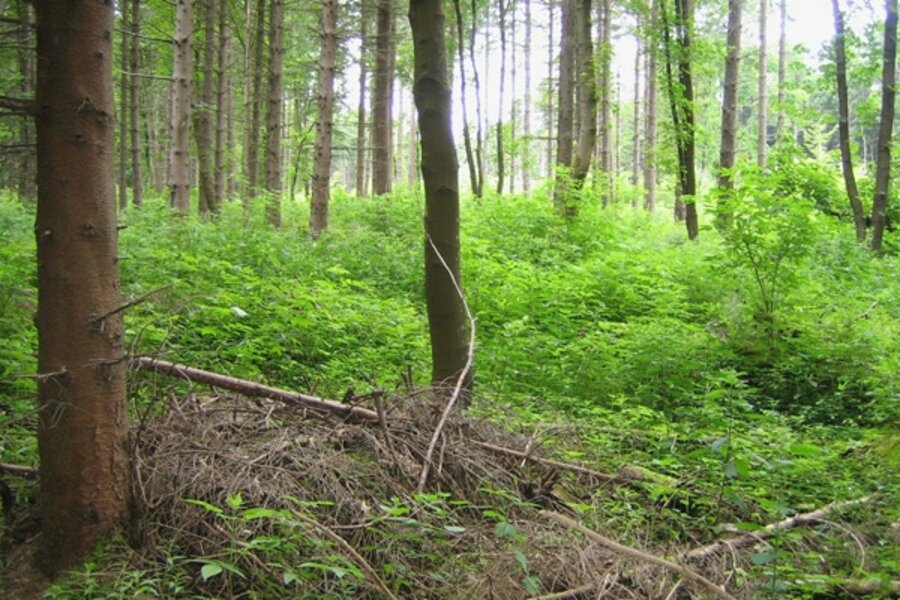Mass. looks to forests for renewable energy source
Loading...
| Boston
In its push for renewable energy, Massachusetts is hoping to add wood-burning power plants to the list of green power options that already include wind turbines and solar panels.
Dubbed “biomass energy,” the push to help wean the state off coal-burning plants by incinerating trees and wood has the backing of state officials and many environmentalists.
The Patrick administration already has invested $1 million to help jump start the development of four wood-burning plants in the western Massachusetts communities of Russell, Greenfield, Springfield and Pittsfield as it tries to meet the goal of producing 15 percent of the state’s energy needs from renewable sources by 2020.
But a coalition of neighborhood groups and other environmental advocates is pushing back.
They say burning trees shouldn’t be lumped in with greener sources of energy and that the push for biomass power could lead to the clear cutting of forests while pumping more carbon dioxide into the air than coal plants, adding to global warming.
“This is not like wind and solar which are truly green and clean,” said Meg Sheehan, an attorney based in Cambridge.
Sheehan has filed four proposed ballot questions targeting the wood-burning plants.
The questions would bar the harvesting of wood products from state forests, ban public funds for renewable energy products that emit excessive carbon dioxide, and require carbon dioxide limits on renewable and alternative energy sources.
State environmental officials defend their support of wood-burning plants, noting trees can be regrown.
“It’s endlessly renewable,” said Robert Keough, a spokesman for the Massachusetts Executive Office of Energy and Environmental Affairs. “As long as people have been talking about renewable energy, biomass has been included.”
While he conceded the state allowed some “bad cuts” on forest lands, the focus now is on the removal of 7,000 acres of non-native trees planted decades ago by the Civilian Conservation Corps. He said the state is also developing a “sustainability criterion” for biomass power.
Peter Bos, managing partner of Russell Biomass LLC, said that unlike coal, trees left standing or replanted can absorb the carbon dioxide released when wood is burned. Bos also said every megawatt of power produced by wood-burning plants replaces a megawatt produced by a coal plant.
“As long as you have a growth in the trees in the forest that is greater than the trees removed, you increase the carbon dioxide absorption,” he said.
Bos said his power plant will produce 50 megawatts, enough power for about 50,000 homes. The wood will come from a 75-mile radius around the plant — including portions of eastern New York, southern Vermont and western Connecticut. More than half will consist of “waste wood” — including branches cleared by tree service companies and trees cleared for development.
Matthew Wolfe, an executive with Cambridge-based Madera Energy, Inc., which is developing the Greenfield plant, said there’s enough wood within 55 miles of the plant to provide the 15,000 tons a day needed to fuel the plant while still leaving net positive tree growth.
John Rogers, a senior energy analyst for the Cambridge-based Union of Concerned Scientists, said there’s no comparison between coal and wood-burning plants. If done in a sustainable fashion each year the growth in trees each year will be enough to recapture the carbon being released.
“You have to look at more than just smokestack emissions,” he said. “You have to take a holistic view of any technology.”
Jana Chicoine, spokeswoman for Concerned Citizens of Russell, said she’s not impressed by the arguments that the power plants can somehow find enough fuel without eventually cutting down the forests in a more aggressive manner.
“If you need to feed your beast a ton of wood a minute, you are going to have to clear cut,” she said. “We’re not talking about making it illegal, we’re talking about whether it should be subsidized, whether people want to pay extra to deforest Massachusetts.”





